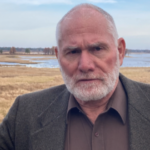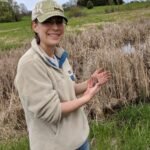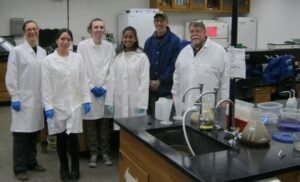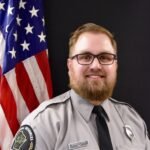A Decoy Corner Article
By Bruce Urben, WWA President
All photos courtesy the author
There have been quite a few great decoy carvers that nave lived on or near Lake Poygan, which lies in Waushara and Winnebago counties in Wisconsin. Poygan is a waterfowler’s lake, part of the Winnebago chain just north and west of Little Lake Butte des Morts and the City of Oshkosh. Poygan, with its shallow depth and emergent vegetation, is a stopover rest spot for migrating waterfowl. Wild rice and wild celery were historically found in Poygan but have since been all but eliminated. The village of Tustin is one town on the northwest end of Lake Poygan that was home to several great carvers – George Shrake and August Moak.
George F. Shrake was born in 1906 and grew up hunting, fishing and trapping on Lake Poygan. In the 1930’s, George purchased several decoys from August Moak, his neighbor in Tustin. George used these decoys as patterns to make his own hunting rig of decoys. A year later George had assembled a large rig of decoys for his own use on Poygan. He carved mainly bluebill and canvasback; very few other species are known to have been carved by Shrake.
George began using cedar to fashion his bodies, and basswood or pine for his heads. His decoys were all hollowed and he used glass eyes in the heads. As you might guess, George’s decoys closely resembled Gus Moak decoys and have many times been confused with Moak’s work. One identifying feature is the method of attaching the head on Shrake’s decoys. George used a wood dowel extending through the top of the head, while Moak used a double threaded screw from inside the body to connect his heads.
Shrake also took less time in smoothing the bodies on his decoys. All are much rougher than Moak’s and show clear rasp marks. George’s painting was very similar to Moak’s, oil paint with simple realistic patterns and little shading. Many of George’s bluebill decoys have flattened eye pockets rather than eye grooves and his bodies were carved with a noticeable hump back, again much like Moak.
Very seldom will you see a signed or labeled decoy by Shrake. Later in George’s career he carved a number of decoys with a balsa body, which was more available after WWII.
George’s total decoy output was quite small, estimated to be less than 100 decoys. As you might expect, collectors highly value Shrake decoys. Identification is the key to differentiating a Shrake from a Moak, which many times comes down to an X-ray to confirm the head attachment.
George passed away in 1986 at the age of 80 while living in Waushara County near his childhood home.
I am honored to have one of George’s early humpback bluebills… and yes, this one was originally misidentified as a Gus Moak!





















